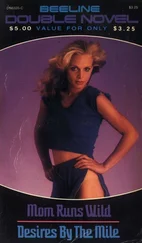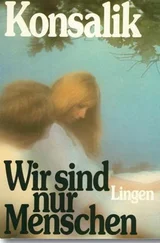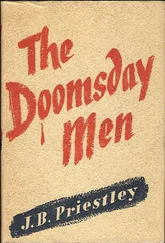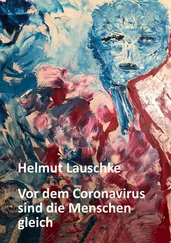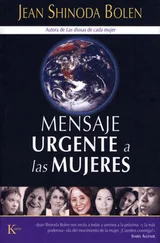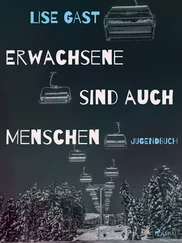‘I couldn’t see the instruments,’ said George Weil. ‘I had to watch Fermi every second, waiting for orders. His face was motionless. His eyes darted from one dial to another. His expression was so calm it was hard.’ 8
Fermi studied the rising graph, glancing away only to make calculations with his slide rule. ‘His gray eyes betrayed his intense thinking, and his hands moved along with his thoughts,’ his wife Laura wrote later, imagining the scene. 9
Suddenly, the Italian’s face broke into a broad smile and he closed his slide rule. ‘The reaction is self-sustaining,’ he said quietly, looking round at his colleagues on the balcony. ‘The curve is exponential.’ 10
It was what everyone had hoped for, but no one had dared believe would happen: the pile had gone critical. But instead of ordering Zinn to drop the emergency rod, Fermi waited. For what to his fellow scientists seemed a lifetime, he stared at the inexorably rising line of the graph. It was as if the sceptical physicist could scarcely believe the evidence of his own scientific instruments.
Then Fermi gave the order they had all been waiting for: ‘ZIP in!’ It was 3.53 p.m. For 28 minutes they had watched the world’s first nuclear reactor in operation. The atomic age had begun.
There were no cheers that day, but the excitement and relief were felt by everyone. Fermi smiled across at Leo Szilard and then shook Compton by the hand. Eugene Wigner produced a bottle of straw-bound Chianti from a brown paper bag and presented it to the Italian physicist. It had been no mean feat tracking one down during wartime. They toasted their success and the new age of science with Chianti in paper cups. Wigner recalled that as they drank the bitter-sweet wine, ‘we sent up silent prayers that what we had done was the right thing’. 11Afterwards they all solemnly signed their names on the Chianti bottle for posterity.
That evening, Compton telephoned James B. Conant, who was leading the US Government project to turn atomic energy into a superweapon. Compton’s message was in code, but its meaning was crystal clear:
‘The Italian navigator has landed in the New World’.
‘How were the natives?’ asked Conant.
‘Very friendly.’ 12
Enrico Fermi and Leo Szilard stood alone on the balcony overlooking the now dormant atomic pile after the others had left. Both of them knew what their success meant. The world was at war. That very day the US State Department revealed that two million Jews had already been killed by Hitler and a further five million were now at risk. Perhaps Hitler’s physicists had already built an atomic pile like theirs and were even now creating an atomic bomb.
More than anyone, Leo Szilard had seen this moment coming. For almost a decade he had been warning of its consequences. Before the war, few would listen to his fears. Now, as Szilard had told his colleagues just two months earlier, they were entering a new and terrible age. ‘One has to visualize a world’, he said, ‘in which a lone airplane could appear over a big city like Chicago, drop his bomb, and thereby destroy the city in a single flash. Not one house may be left standing and the radioactive substances scattered by the bomb may make the area uninhabitable for some time to come.’ 13
No wonder that as Szilard turned to Fermi and shook his hand, he told him: ‘This day will go down as a black day in the history of mankind.’ 14
2
The Gift of Destruction
He had in his hands the black complement to all those other gifts science was urging upon unregenerate mankind, the gift of destruction…
H. G. Wells,
The World Set Free (1914)
On 2 December 1952, the University of Chicago held a celebration. On the squash court beneath the Stagg Field stadium, twenty-four of the original forty-two scientists, including Enrico Fermi and Leo Szilard, came together with leading politicians and businessmen to ‘mark the end of the first decade of the atomic age and the beginning of the second’. 1The straw-covered Chianti bottle they had all signed ten years earlier was displayed as the first sacred relic of the atomic age. The newspapers reported that its proud owner had insured the empty bottle for $1,000.
The New York Times devoted a series of articles to the anniversary. William L. Laurence, the only journalist to have been given access to the atomic bomb project, compared the scientists to the mythic heroes of antiquity. ‘That afternoon ten years ago’, wrote Laurence, ‘witnessed the lighting on earth of a new type of fire, the first of its kind since the legendary Prometheus taught man the use of fire and started him on the slow march to civilization.’
Laurence went on to say that their achievement ‘brought civilized mankind one of the greatest threats to its existence’. 2Within three years of the Chicago chain reaction, two Japanese cities had been destroyed by atomic weapons. Eugene Wigner wondered whether they had unlocked ‘a giant’ whom they could not control. 3It was a fear shared that December by people around the world, for the previous month America had exploded the world’s first hydrogen bomb – the ultimate weapon of mass destruction.
On 1 November 1952, the darkness of the tropical night was rent by an artificial sun whose heat burnt the skin of sailors watching from thirty miles away. In an instant a small Pacific island called Elugelab was vaporized, leaving a crater more than a mile across. The fireball created by the hydrogen bomb was three miles wide, and a cloud of lethal radioactive by-products soared high into the stratosphere. Its awesome energy came from the same processes that fuel the sun – the fusing together of hydrogen atoms.
But the scientists had got their sums wrong. The thermonuclear explosion was more than twice as powerful as they had expected. The ‘Mike’ H-bomb test was the largest non-natural explosion the world had yet seen, equivalent to more than ten million tons of conventional high explosive. The Hiroshima bomb had the explosive power of a mere 12,500 tons of explosive. Even though it was a thousand times less powerful, it was enough to incinerate more than a hundred thousand Japanese, and fatally injure tens of thousands more.
Nobody has discovered a more powerful explosive than the hydrogen bomb – at least not yet. A year and a half after the Mike test, America exploded a bomb equivalent to 15 million tons of TNT (15 megatons in nukespeak). This test, at Bikini Atoll, remains the largest bomb ever detonated by the United States. But in the deadly game of one-upmanship that was the cold war, the Soviets had to go one step further. In 1961 they detonated a thermonuclear monster of about 60 megatons. It could have been bigger. The bomb’s yield had been limited for the test; the device was capable of 100 megatons.
The decision to develop the next generation of nuclear weapons in America had been made by President Truman in 1950. Even before his decision was announced, on 1 February, the New Statesman had declared that ‘the whole future of civilisation’ was at stake. The British journal argued that these ‘new weapons of mass destruction’ would make a Third World War ‘inevitable’. It would be a war fought by ‘methods of mass murder which would outstrip the wildest dreams of the SS and Himmler’. 4
President Truman turned a deaf ear to such warnings and to the misgivings voiced by many leading scientists. Men such as James Conant and Robert Oppenheimer, who had played key roles in the Manhattan Project, as the atomic bomb project was code-named, left him in no doubt what they thought. In their official advice to the President they said the new bomb ‘represents a threat to the future of the human race which is intolerable’: it was a ‘weapon of genocide’. They also declared themselves ‘alarmed’ at the ‘possible global effects of the radioactivity’ from H-bomb explosions.
Читать дальше


